|
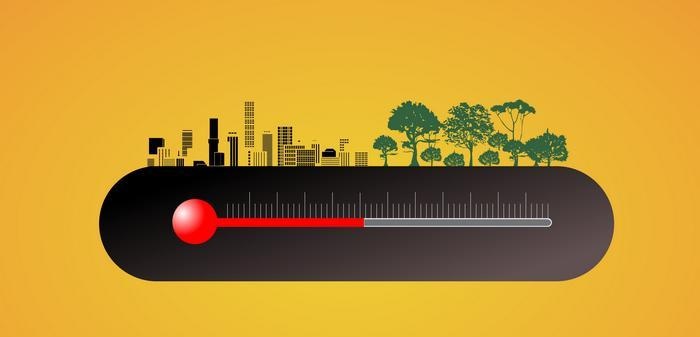 Is the Earth's climate changing? This question has long been of concern not only to scientists. As shown by meteorological observations, since the end of the nineteenth century, the average air temperature at all latitudes of the northern hemisphere has been increasing. Warming peaked in the late thirties of the twentieth century, when the average air temperature was 0.6 degrees higher than in the late nineteenth. Then a cold snap began. By the mid-sixties of the XX century, the air temperature dropped by about 0.3-0.4 degrees. Is the Earth's climate changing? This question has long been of concern not only to scientists. As shown by meteorological observations, since the end of the nineteenth century, the average air temperature at all latitudes of the northern hemisphere has been increasing. Warming peaked in the late thirties of the twentieth century, when the average air temperature was 0.6 degrees higher than in the late nineteenth. Then a cold snap began. By the mid-sixties of the XX century, the air temperature dropped by about 0.3-0.4 degrees.
|
|
|
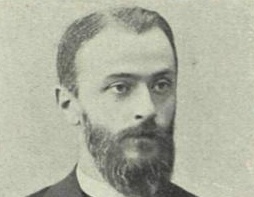 It was in 1887. Two students of St. Petersburg University, at the suggestion of the famous botanist-geographer A.N. Beketov, went to Ukraine and Bessarabia to study the tobacco disease widespread at that time, which caused enormous damage to agriculture. Young naturalists got down to business with enthusiasm. They managed to establish the existence of two tobacco diseases at once. One of them - hazel-grouse, an infectious disease, was treated simply: by raising the culture of agriculture, by correct crop rotation. The reason for another - jaundice - was not identified then. It was in 1887. Two students of St. Petersburg University, at the suggestion of the famous botanist-geographer A.N. Beketov, went to Ukraine and Bessarabia to study the tobacco disease widespread at that time, which caused enormous damage to agriculture. Young naturalists got down to business with enthusiasm. They managed to establish the existence of two tobacco diseases at once. One of them - hazel-grouse, an infectious disease, was treated simply: by raising the culture of agriculture, by correct crop rotation. The reason for another - jaundice - was not identified then.
|
|
|
 The successes of modern biology are mainly associated with that branch of it, which is called molecular biology. Particularly striking results were achieved in the study of heredity - the properties of organisms, which for a long time remained mysterious. Scientists have managed to uncover the nature of the gene. For centuries it seemed to be something mystical, almost non-existent. And it turned out to be a very real chemical structure - a certain piece of deoxyribonucleic acid (DNA), which is the carrier of genetic information. The successes of modern biology are mainly associated with that branch of it, which is called molecular biology. Particularly striking results were achieved in the study of heredity - the properties of organisms, which for a long time remained mysterious. Scientists have managed to uncover the nature of the gene. For centuries it seemed to be something mystical, almost non-existent. And it turned out to be a very real chemical structure - a certain piece of deoxyribonucleic acid (DNA), which is the carrier of genetic information.
|
|
|
 As the legends and folk tales of antiquity testify, people from time immemorial have prepared wine from grape juice, made cheese from sour milk, struck enemies and wild animals with arrows, the tips of which were saturated with deadly poison. Man has observed and used many amazing transformations taking place in living organisms and materials taken from them, such as blood coagulation, ripening (and decomposition) of meat, fish and plant products. But why all this is happening, he could not explain for a long time. It was only at the beginning of the 19th century that active substances were discovered in biological objects that cause such transformations. As the legends and folk tales of antiquity testify, people from time immemorial have prepared wine from grape juice, made cheese from sour milk, struck enemies and wild animals with arrows, the tips of which were saturated with deadly poison. Man has observed and used many amazing transformations taking place in living organisms and materials taken from them, such as blood coagulation, ripening (and decomposition) of meat, fish and plant products. But why all this is happening, he could not explain for a long time. It was only at the beginning of the 19th century that active substances were discovered in biological objects that cause such transformations.
|
|
|
 The fate of Stepan Petrovich Krasheninnikov was unusual. The son of a soldier, he was born in Moscow on October 31, 1711. At the age of 13 he was admitted to the Slavic-Greek-Latin Academy at the Zaikonospassky monastery. Among the twelve best students in 1732, he was sent as a student to the St. Petersburg Academy of Sciences. There he underwent appropriate training in order to then take part in the most remarkable scientific expedition of the 18th century. The fate of Stepan Petrovich Krasheninnikov was unusual. The son of a soldier, he was born in Moscow on October 31, 1711. At the age of 13 he was admitted to the Slavic-Greek-Latin Academy at the Zaikonospassky monastery. Among the twelve best students in 1732, he was sent as a student to the St. Petersburg Academy of Sciences. There he underwent appropriate training in order to then take part in the most remarkable scientific expedition of the 18th century.
|
|
|
 In 1665 the Englishman Robert Hooke built a device that we call a microscope. Like any curious person, and scientists differ from a mere mortal among other advantages and this quality, Hooke began to examine everything that came to hand through a microscope. In 1665 the Englishman Robert Hooke built a device that we call a microscope. Like any curious person, and scientists differ from a mere mortal among other advantages and this quality, Hooke began to examine everything that came to hand through a microscope.
|
|
|
 "Oh, if this too, too heavy body melted, dissolved, became dew!" The famous English geophysicist Harold Jeffries took these words of Hamlet as an epigraph to one of the chapters of his book "Earth". "Oh, if this too, too heavy body melted, dissolved, became dew!" The famous English geophysicist Harold Jeffries took these words of Hamlet as an epigraph to one of the chapters of his book "Earth".
|
|
|
 In the play by A. P. Chekhov "The Seagull" one of its heroes, the writer Treplev, speaks of the ability of the writer Trigorin to paint a landscape in sparse and precise words: “The neck of a broken bottle shines on his dam and the shadow of a mill wheel is blackening - so the moonlit night is ready, and I have a trembling light, and a quiet twinkling of stars, and distant sounds of a piano, fading in the quiet fragrant air ...” In the play by A. P. Chekhov "The Seagull" one of its heroes, the writer Treplev, speaks of the ability of the writer Trigorin to paint a landscape in sparse and precise words: “The neck of a broken bottle shines on his dam and the shadow of a mill wheel is blackening - so the moonlit night is ready, and I have a trembling light, and a quiet twinkling of stars, and distant sounds of a piano, fading in the quiet fragrant air ...”
|
|
|
 Modern biology has penetrated deeply into the depths of the cell — the “brick” of the living. A living cell appeared to scientists as a harmonious combination of simpler structures - membranes, tubes, granules, fibrous formations, consisting of ordered molecules connected to each other. Modern biology has penetrated deeply into the depths of the cell — the “brick” of the living. A living cell appeared to scientists as a harmonious combination of simpler structures - membranes, tubes, granules, fibrous formations, consisting of ordered molecules connected to each other.
|
|
|
 Studies of the sympathetic-adrenal system in terms of daily and seasonal biorhythms provide very extensive information about the deep processes in the body. However, the method of adrenograms shows the dynamics of changes in the state of the sympathetic-adrenal system only for the period of time covered by the study. Studies of the sympathetic-adrenal system in terms of daily and seasonal biorhythms provide very extensive information about the deep processes in the body. However, the method of adrenograms shows the dynamics of changes in the state of the sympathetic-adrenal system only for the period of time covered by the study.
|
|
|
 One of the expressions of the psyche's dependence on material processes occurring in the brain is a change in the electrical activity of the brain during external stimuli. One of the expressions of the psyche's dependence on material processes occurring in the brain is a change in the electrical activity of the brain during external stimuli.
|
|
|
 Few of even the most prominent experts in the field of atomic physics knew that morning of 1942 that man had finally mastered the secret control of a nuclear chain reaction. But three years later, in 1945, the world was shocked by the tragedy of the Japanese cities - Hiroshima and Nagasaki. Few of even the most prominent experts in the field of atomic physics knew that morning of 1942 that man had finally mastered the secret control of a nuclear chain reaction. But three years later, in 1945, the world was shocked by the tragedy of the Japanese cities - Hiroshima and Nagasaki.
|
|
|
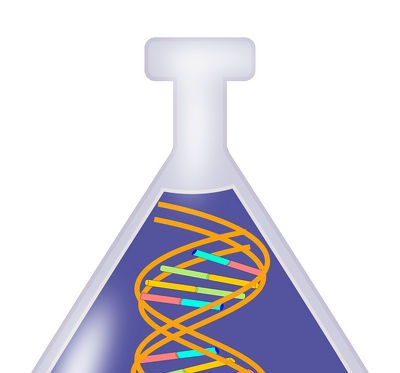 The structural element of nervous activity in the brain is a nerve cell (neuron). Its functional activity is investigated by many methods - histological, histochemical, electron microscopic, radiographic and others. A large number of works on the nerve cell have been published, but the functional significance of its individual constituent parts remains unknown. The structural element of nervous activity in the brain is a nerve cell (neuron). Its functional activity is investigated by many methods - histological, histochemical, electron microscopic, radiographic and others. A large number of works on the nerve cell have been published, but the functional significance of its individual constituent parts remains unknown.
|
|
|
 The commander of the French expeditionary force on the island of Haiti, General Leclerc, was looking for a large detachment of soldiers who went into the interior of the island, but soon stopped giving any news of themselves. The commander of the French expeditionary force on the island of Haiti, General Leclerc, was looking for a large detachment of soldiers who went into the interior of the island, but soon stopped giving any news of themselves.
|
|
|
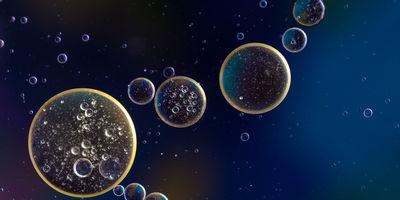 When Professor A. Champagna took to the rostrum of the World Petroleum Congress in Frankfurt am Main to read his report, the hall was overcrowded. When Professor A. Champagna took to the rostrum of the World Petroleum Congress in Frankfurt am Main to read his report, the hall was overcrowded.
|
|
|
 Life is usually seen as a continuous process. It arises at the moment of the emergence of a living being in an egg, spore or seed, goes through a number of more or less complex stages of development, reaches a certain flowering, diminishes with aging and ends at the moment of old age, when all life processes stop. Life is usually seen as a continuous process. It arises at the moment of the emergence of a living being in an egg, spore or seed, goes through a number of more or less complex stages of development, reaches a certain flowering, diminishes with aging and ends at the moment of old age, when all life processes stop.
|
|
|
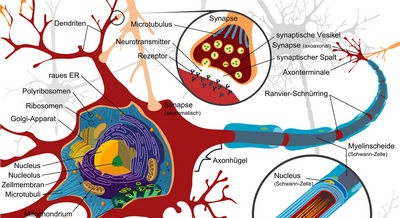 There are three main parts in the human nervous system: central, peripheral and vegetative. There are three main parts in the human nervous system: central, peripheral and vegetative.
|
|
|
 Even in ancient prehistoric times, a person noticed that children are most like their parents. Many peoples have proverbs similar to ours: "The apple falls not far from the apple tree". Even in ancient prehistoric times, a person noticed that children are most like their parents. Many peoples have proverbs similar to ours: "The apple falls not far from the apple tree".
|
|
|
 At first there was just biology - the science of living things. It arose a very long time ago, its experience is calculated not in years, not even centuries - millennia. Over time, it grew old, but did not become obsolete: many of the questions that biology was called upon to solve still remain unanswered. At first there was just biology - the science of living things. It arose a very long time ago, its experience is calculated not in years, not even centuries - millennia. Over time, it grew old, but did not become obsolete: many of the questions that biology was called upon to solve still remain unanswered.
|
|
|
 This welding method has not yet emerged from the laboratories. It is studied by research teams both here and abroad. As foreign journals write, the results obtained already now give reason to expect much from the use of explosive welding. This welding method has not yet emerged from the laboratories. It is studied by research teams both here and abroad. As foreign journals write, the results obtained already now give reason to expect much from the use of explosive welding.
|
|
|
 And it is known that the overwhelming part of information about the world around us we receive with the help of our organs of vision. “Better to see once than hear a hundred times” - this is not said in vain. And it is known that the overwhelming part of information about the world around us we receive with the help of our organs of vision. “Better to see once than hear a hundred times” - this is not said in vain.
|
|
|
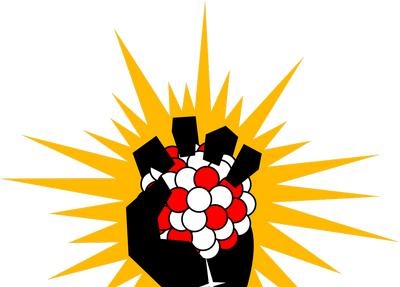 Transuranic elements are the brainchild of modern technology. Laboratories with sophisticated equipment, nuclear reactors - these are the "deposits" from which, at the cost of huge energy expenditures, are now receiving insignificant quantities of elements that are not in nature. Transuranic elements are the brainchild of modern technology. Laboratories with sophisticated equipment, nuclear reactors - these are the "deposits" from which, at the cost of huge energy expenditures, are now receiving insignificant quantities of elements that are not in nature.
|
|
|
 This mysterious box is mentioned on the radio or in the newspapers most often in connection with plane crashes or accidents. At the same time, they not only cite the number of accidents and search hot on the trail of the cause of the incident, but also necessarily raise the question of whether it was possible to find the "black box". This mysterious box is mentioned on the radio or in the newspapers most often in connection with plane crashes or accidents. At the same time, they not only cite the number of accidents and search hot on the trail of the cause of the incident, but also necessarily raise the question of whether it was possible to find the "black box".
|
|
|
 A fish with the intelligence of a rat? Or maybe a rat with the body of a fish? It is not so easy to decide what to call this chimerical creature created by D. Bresler of the University of California (Los Angeles) and M. Bitterman of Bryn Mawr College (Pennsylvania). A fish with the intelligence of a rat? Or maybe a rat with the body of a fish? It is not so easy to decide what to call this chimerical creature created by D. Bresler of the University of California (Los Angeles) and M. Bitterman of Bryn Mawr College (Pennsylvania).
|
|
|
 Whatever data astronomers and astrophysicists receive about celestial bodies, it is possible to decipher these data, as a rule, only relying on the regularities derived in ground-based laboratories when studying terrestrial objects. Whatever data astronomers and astrophysicists receive about celestial bodies, it is possible to decipher these data, as a rule, only relying on the regularities derived in ground-based laboratories when studying terrestrial objects.
|
|
|
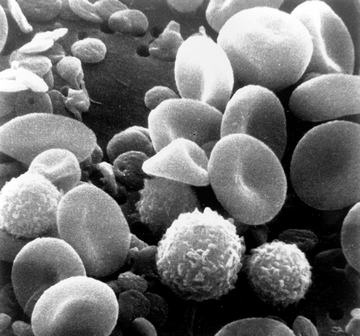 The beginning of a new life is given by a single fertilized egg, from which all the great many cells of the human body are formed. How many are there? According to some estimates, about 100 trillion, but I think no one can give an exact figure. The beginning of a new life is given by a single fertilized egg, from which all the great many cells of the human body are formed. How many are there? According to some estimates, about 100 trillion, but I think no one can give an exact figure.
|
|
|
 The man began to lose hair due to the "pranks" of fashion, which played, perhaps, a noticeable role in those distant times. The man began to lose hair due to the "pranks" of fashion, which played, perhaps, a noticeable role in those distant times.
|
|
|
 In 1861, an outstanding event happened - a sugar-like substance was first created in a chemist's test tube! In 1861, an outstanding event happened - a sugar-like substance was first created in a chemist's test tube!
|
|
|
 As evidenced by the facts, a laser beam can carry enough energy to be able to carry out surgery, drill diamonds and even heat microscopic quantities of a substance to temperatures of millions of degrees. As evidenced by the facts, a laser beam can carry enough energy to be able to carry out surgery, drill diamonds and even heat microscopic quantities of a substance to temperatures of millions of degrees.
|
|
|